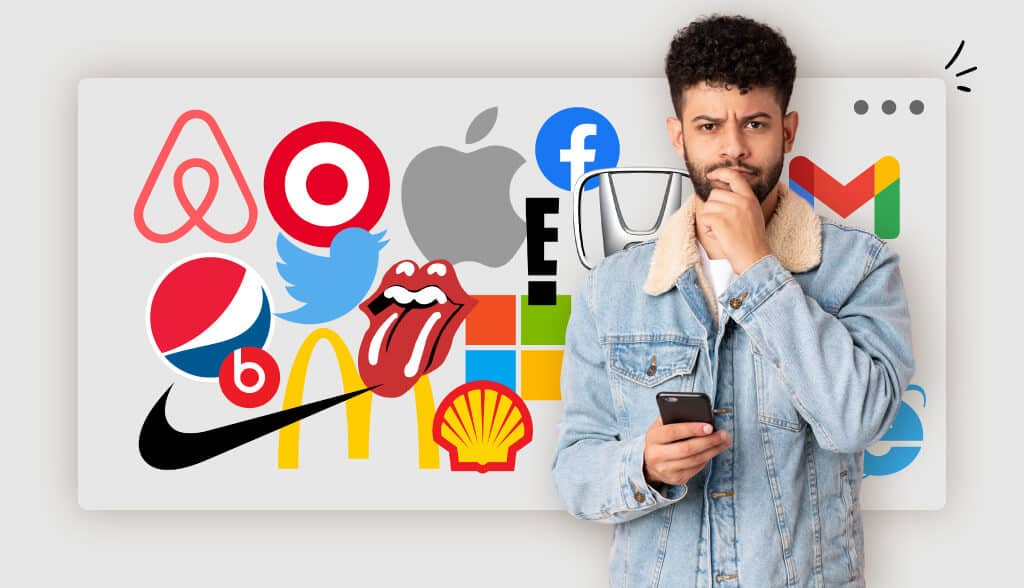I’m going to go ahead and say it: I’m attached to my Camelbak water bottle.
The color is fading, the top is leaking, and I can probably get a new bottle for half the price.
But it comes with me everywhere, and I know I’m only going to buy from Camelbak when I’m ready to make my next purchase.
Contrary to what it might seem, I’m not a brand ambassador for Camelbak; I’m just a consumer in a long-term relationship with a hydration brand. (Not the worst thing you could be accused of in your ‘20’s, amiright?)
And the way I feel about Camelbak is the way that your target audience will feel about what you offer – if you’re willing to start working on building brand loyalty.
What is Brand Loyalty, and Why Does it Matter?
Put simply, brand loyalty is when a customer chooses to repeatedly purchase a product or service from the same business instead of going with a different product or service that’s offered by a competitor. In other words, the customer is quite literally showing loyalty to one brand over another.
Like me and my good ole’ Camelbak, brand-loyal consumers don’t need heavy marketing or other incentives in order to make these repeat purchases. They already enjoy what their brand of choice has to offer, and they’re familiar enough with it to come back to them whenever they need to restock or purchase something new in that niche.
Think about your friend that only uses Mac computers, only drinks Coke, or only listens to Nickelback (not judging, but why???). These are classic examples of everyday brand loyalty.
Pepsi arguably tastes just as good as Coke, Dell makes some pretty powerful laptops, and I don’t think I even need to tell you why there are better bands than Nickelback to have on your playlist – yet so many people stick to what they love.
Of course, it takes a lot of effort to get customers to keep coming back. 37% of consumers say they need to purchase from a business 5 times before they feel loyal to it – which is why you should think about how to build brand loyalty from when you first start to create your brand.
Brand Loyalty Vs. Customer Loyalty
Before we dive into how to actually start doing this, it’s important to differentiate between brand loyalty and customer loyalty.
While both brand loyalty and customer loyalty focus on retaining your customers, they’ll require different efforts on your part. Customer loyalty stems from the way you price your products or services. You can foster it by aligning your pricing and offerings with the financial needs of your customers, in addition to satisfying the quality of service they expect to get from your brand (think customer support, etc.).
Brand loyalty, on the other hand, is created by factors that have little to do with money. It’s about creating a personal connection between your brand and its customers, and getting customers to trust your brand. In fact, 67% of consumers say they need to trust the brand that’s behind a product or service.
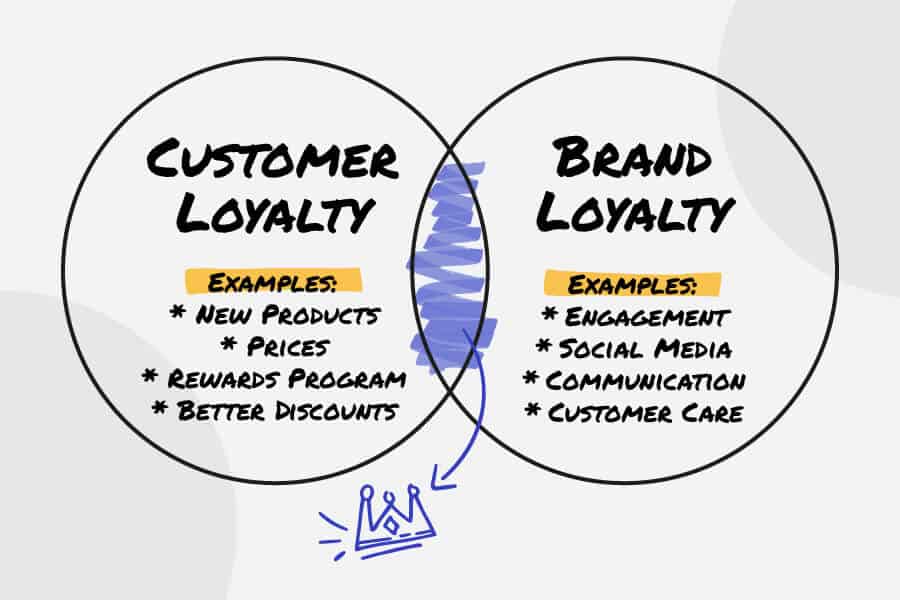
So, let’s say your friend needs work done in her house. If she’s used an agency in the past which hasn’t raised their prices and always answers the phone, she may want to choose them again. However, she may think it’s a no-brainer to go with Dave the handyman, because, though he may be more expensive, she feels safe with him in her house and trusts that he’s going to do great work regardless of the job she gives him.
In this example, the agency choice would be based on customer loyalty, while the Dave choice would be based on brand loyalty.
As you can see, both customer loyalty and brand loyalty are important factors in retaining customers, and in an ideal world, you’ll be able to work on creating both. But, for the purpose of this post, we’re going to talk about how to start creating brand loyalty from day one.
How to Begin Building Brand Loyalty
If you like watching videos more than you like to read, then check this one out to learn how to start building brand loyalty:
Remember, brand loyalty is emotional. It comes from a positive perception that people will form with your brand over a series of interactions that they have with you. With that in mind, let’s look at a few ways to start building your brand loyalty immediately!
Find your brand voice and story
To build brand loyalty, you first need, well, a brand for your customers to connect with. At the heart of every strong brand is a story, and a brand voice through which to tell that story.
As I said above, brand loyalty happens over a series of interactions with your brand – not just one. Each time your customers have a positive experience with you, it will reinforce your brand in their minds as a company that they want to keep doing business with.
So, the first way to do this is by creating a brand voice that expresses your story (as part of your overall brand identity). You’ll want to do this in a way that gives your customers this positive experience when they come in contact with you.
Airbnb does a great job of this, by featuring user-generated content (i.e. photo and story submissions from their users) that constantly reinforces their brand story.
Not only does showing off their customers help to encourage other customers to keep using the Airbnb, but it also creates that sense of “home away from home” that lies at the heart of the brand – inspiring previous Airbnb users to take their next adventure.
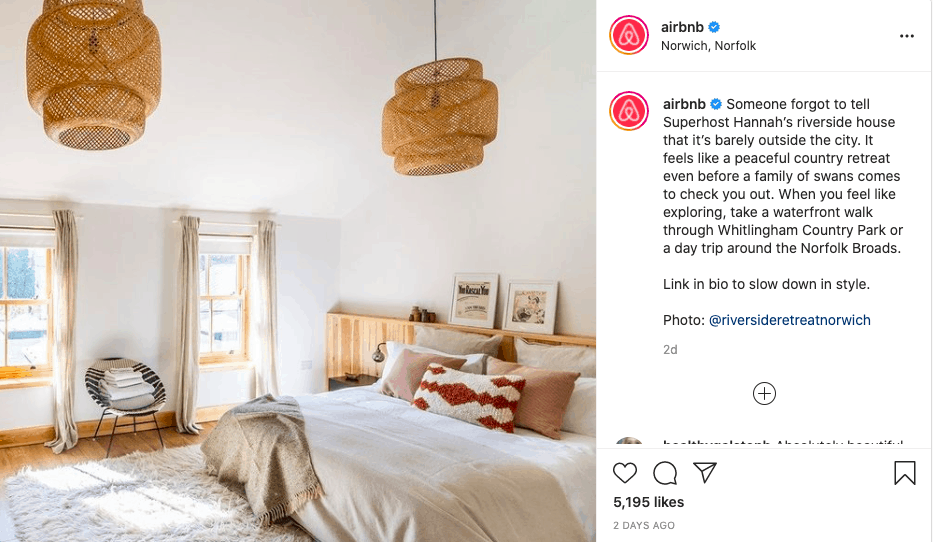
To come up with your brand story, ask yourself who your customers want to be, and how your product or service will help them become that. If you have a cleaning service, maybe your customers want to see themselves as put together and on top of their life – so your brand voice uses language that aims to help them feel empowered and grounded.
Perhaps your customers want to see themselves as fashion-forward and with it, and the trendy clothing you sell will help them do that. Your brand voice would probably be quippy, witty, and make common pop culture references.
Give your customers a positive first experience through your brand voice, and you’ll build the trust over time that keeps them coming back.
Engage with your customers on social media
…or any other platform! Once you’ve established a brand voice and story, your business needs a place to “perform” as a brand – to show off your personality and your voice.
Take a look at how Spanx, an undergarment shaping brand, does just that for Father’s Day:

They took a regular Hallmark holiday and used it to make a playful pun that relates back to both their brand message and product.
Regardless of the platform you use, you’ll also want to focus on creating a sense of community with your brand.
People love to feel part of communities that offer mutual benefits. Digital communities – like LinkedIn or Facebook Groups, and forums that discuss something related to your industry – are a good place to start. Try to think of ways to create an environment that your customers can be a part of, which they wouldn’t necessarily be able to access if they weren’t your customer. For example, if you’re a financial consultant, you could start a weekly discussion group about budget hacks that you only offer to people who have used your services in the past.
Building community could also just mean engaging regularly with your customers. Reach out to past customers and let them know about a new offer. If you run yoga classes, you can create Stories about them on Instagram and send your stories to past customers with a cute message like “would love to see you there!”
People tend to feel seen when you reach out to them, and it helps them create personal connections with your brand, as opposed to just seeing you as “just another business.” Engaging on social media and creating community will also help your brand stay relevant in the minds of your customers, so the next time they need something you offer, they’ll be more likely to think of you.
Lastly, social media is a great place to gather feedback – both positive and negative. It will help you to have a finger on the pulse of your customers’ needs as they change, so that you can adapt to those changes and continuously improve your offering to meet your customers’ expectations.
Borders Books and Music, a brick-and-mortar bookstore chain, failed to follow their customers’ changing preferences. Where Barnes and Nobles shifted and created their own ebook reader, Borders doubled down on their physical stores, and as a result, they went bankrupt in 2011.
Provide the best customer service you can
Customer service is a key friction point for consumers, and it plays a big role in whether or not they come back to your brand. Although this touches more on customer loyalty than brand loyalty, it’s still important to mention.
That’s because part of building brand loyalty is easing purchasing anxiety. The more customers feel comfortable purchasing from you, the more likely they will be to do it again.
For example, Apple is known for their famous Genius Bar, who are available to answer customer questions or help with repairs. They have a one-year warranty on all their products, and they even have an in-depth knowledge base. This allows customers to feel like they have the support they need if something goes wrong, so they’re taking less of a risk by repeatedly purchasing from the brand.
Now, you may not be the size of Apple, but you can still provide stellar customer service! This could mean something as simple as enabling live chat support on your website, which you can do through platforms LiveChat or tawk.to, or setting up a WhatsApp Business Account, so your customers can reach you if they have questions.
Answering DM’s on Instagram in a timely manner is key, as is responding to comments in a friendly way, regardless if they’re positive or negative.
Let your first-time customers know early on that you have top-notch service and can ease them through the purchasing process. This will both help you to attract first-time customers and make them trust that they can come back to your business in a safe way.
Make use of brand ambassadors
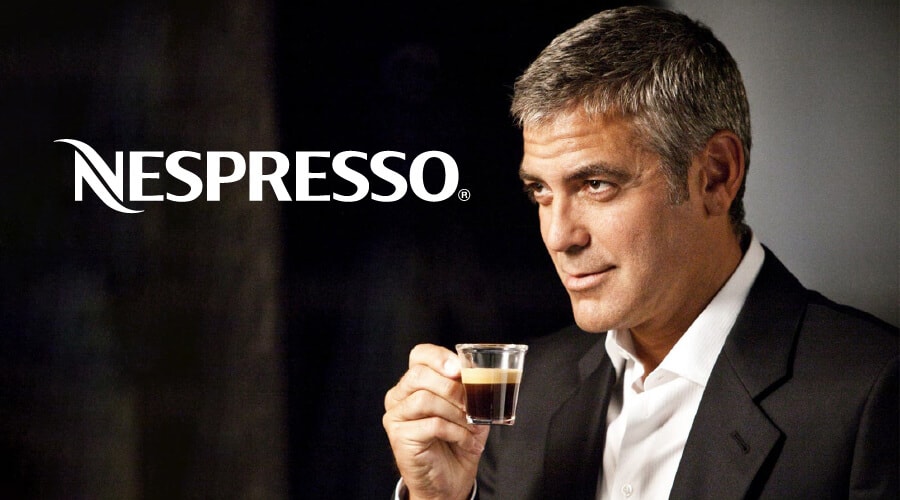
Whoa, scary word alert! But while “brand ambassadors” may seem like something only large companies can do, you actually have an advantage as a small business owner here.
It doesn’t matter if you run a company of 5 or 50; putting a face to your brand will humanize it. Your brand face could be a business partner (if you have one), a local influencer, or even your own. If you offer hands-on services, your face is probably the best face to represent your business – at least in the beginning!
Brands like Dollar Shave Club use their CEO as their brand ambassador, and he’s become well-known enough to the extent that people believe they’re talking to him whenever they interact with the brand.
Remember when this video came out?
Even at Tailor Brands, we partner with social media influencers who share our brand values and that our customers can connect with. (Check out the Tailor Brands TikTok channel if you want to see who that is!)
So, think about who you can partner with to become your brand ambassador. Maybe you have a friend that your target audience would resonate with, or you can start by partnering with someone local in the community whose brand values are similar to yours. Eventually, your returning customers will become your brand ambassadors by default – like I have somehow become for Camelbak.
Implement a rewards program or loyalty card
Loyalty cards aren’t only for Macy’s! They’re a great way to motivate customers to shop more frequently, and you can do this on whatever scale you’re comfortable with. Most loyalty cards simply reward customers for purchasing a certain number of times, either with future discounts, freebies, or other incentives.
I can count on both hands the number of friends I know who have the Starbucks Rewards Card, which gives customers perks and rewards like free food and drinks (for coffee they were probably going to purchase anyway). It helps them feel like they’re an “insider” in the Starbucks brand, in addition to feeling appreciated for being repeat customers.
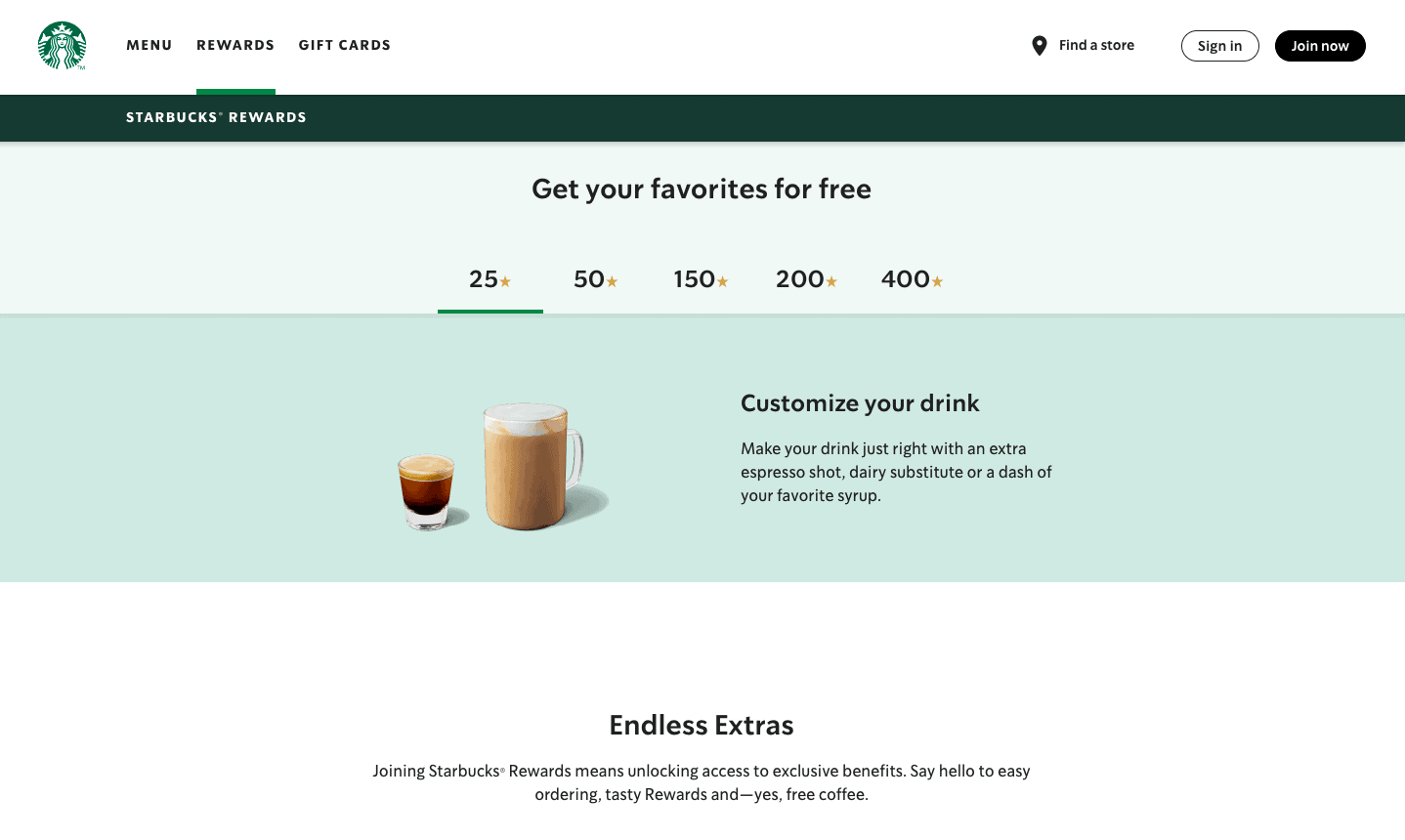
Once you get customers in the door, a members’ club helps you keep your existing customers and communicate with them more effectively. They’re a great way to show that some customers are more special by virtue of how frequently they shop at your business. This reinforces their behavior to engage with your brand repeatedly, while emphasizing community and belonging – emotions that all help create brand loyalty.
Just make sure the reward is attractive, and that it’s easy to redeem. You can also base your rewards program on referrals; for every new customer your current customers refer to you, they can get 50% off the next time they purchase. It’s a win-win-win!
Keep your brand consistent
In a lot of ways, this last tip is easier to do, because it just requires basic maintenance once you have your brand identity created and the tools to help you get there.
Keeping your brand consistent means having the same look and feel, regardless where your customers come in contact with your brand. This is super important, because, as we discussed earlier, it’s going to take several repeat purchases before your customers actually feel loyal to your brand.
That means you need to create the same positive experience for them each time, to reinforce the perception they have of you and help them to keep coming back.
Let’s bring it back to the king of brand loyalty – Apple – as an example. Apple knows that their target audience sees themselves as computer-savvy; they want to be perceived as sleek, current, and with-it.
So, Apple creates that entire experience for their customers through their brand identity. Their design packaging is sleek, they use images of people their customers want to be like on their website and in their ads, and they keep their brand voice and tone consistent across all of their messaging. Of course, their logo is on everything, and it’s equally as minimalist and sleek.
Even their Instagram feed looks like the type of pictures you can take with an iPhone, while staying clean and not “busy”:

So, check that the tone of voice you’re using in your messaging – on social media, email, your website, etc. – matches across the board. Have your visuals aligned with that messaging, both through your logo and your imagery. And, make sure that no matter where your customers might see your brand, they’re getting the same experience overall.
Over to You
Building brand loyalty obviously doesn’t happen in a day. It’s going to take considerable time and consistent efforts, both to initially get customers and have them keep coming back.
Just make sure to focus on providing your customers with a positive experience, from your offerings themselves to the way you interact with your audience.
With time, your products or services will become someone else’s Camelbak, and trust me: Once they feel that way about your brand, they’ll never let go.
